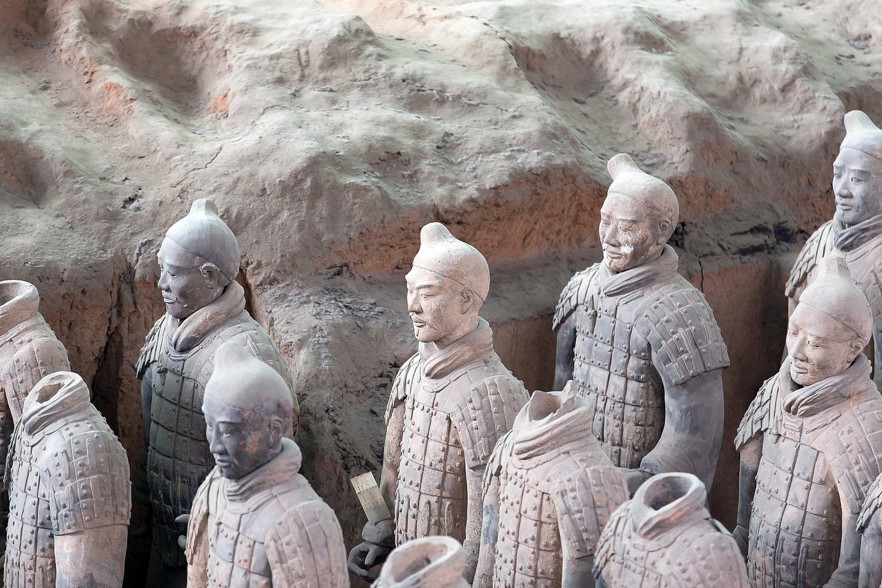What do you do if you want to ensure your rule continues into the afterlife? Why you build yourself an army of terracotta warriors to guard over your tomb, of course!
Well, at least you do if it is 221BC and you are Qin Shi Huang, the first emperor of a unified China… not your everyday chap then…
Discovering the tomb of Qin Shi Huang
According to historical writings, Qin Shi Huang ordered work to be started on his mausoleum shortly after he came to power (well, it is always good to have something to think about in between conquering neighbouring states!). Even with an estimated workforce of over 700,000, the tomb took almost 40 years to build – and may even have been expected to take longer, except Qin Shi Huang died and needed to make use of it.
For more than 2,000 years this huge construction lay undisturbed. Then in 1974 some peasants digging for a well in an area east of Xi’an came across a life-sized, intricately carved, terracotta soldier. This was just the first of around 8,000 battle-ready guardians of the tomb that have now been unearthed, with the original number probably higher still.
Today the complex is a World UNESCO heritage site, open to the public all year round, and the terracotta army is considered as probably the greatest archaeological find of the 20th century. Indeed only the Great Wall (also built by Qin Shi Huang) really can beat it in terms of must-see attractions in China.
An army of individuals
Qin Shi Huang’s army of thousands of life-sized terracotta soldiers was set in underground tunnels and poised for battle outside his tomb, along with their horses, weapons and chariots.
This silent army is even more incredible when you find out that no two soldiers look the same – and all are carved in amazing detail, complete with facial expressions, hairstyles, armour and footwear.
Their features aren’t set by chance either – hairstyles for example, were not a simply lifestyle choice, but an indication of rank and social status and each is different.
Numerous bronze weapons have been found along with the soldiers, including spears, arrow-heads, swords and daggers. What is particularly remarkable about these is how well preserved they are – indeed, they would probably still be lethal if used today. So make sure you behave when you visit!
The underground kingdom of Qin Shi Huang
The inside of the tomb of Qin Shi Huang, guarded so successfully by the terracotta army, is still a mystery, with the tomb remaining sealed at present.
Ancient records indicate there’s an entire underground kingdom surrounded by rivers of mercury, which was thought to give immortality. If the stories are to be believed, the roof of the tomb is designed to represent the sky and is studded with pearls for the sun, moon and stars.
No decision has yet been made about whether to open the tomb, so we might never know what it actually looks like. However, initial probes and sensors have flagged extreme levels of mercury, which gives the stories some credibility.
Whatever secrets the tomb holds, the massive, unique army of terracotta soldiers alone makes this one trip you must make when you visit China.
Why not see the Terracotta Army for yourself on your own trip to China – maybe our China Internship for example, just an idea…




